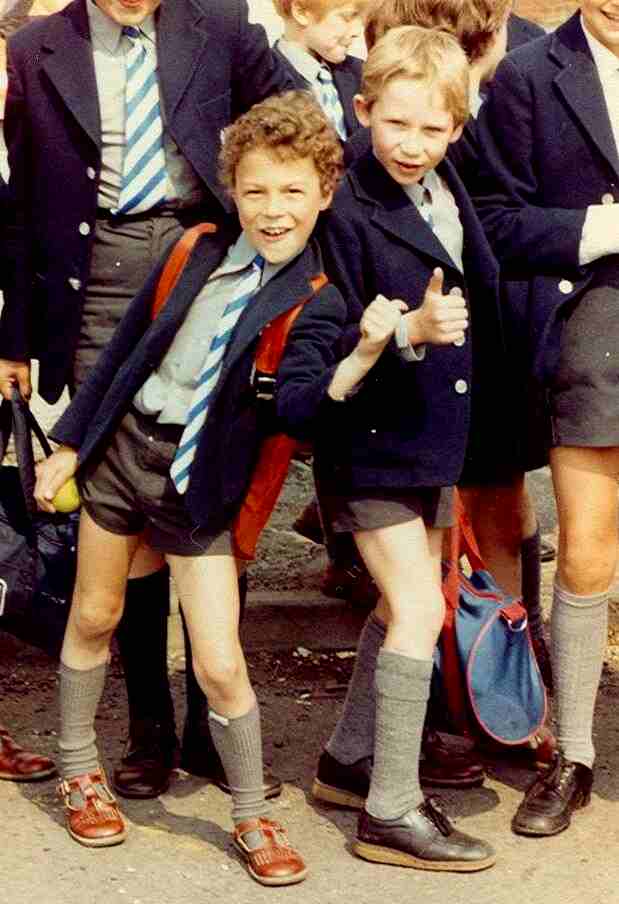
Figure 1.--This school required the boys to wear kneesocks. They could wear either grey or dark blue kneesocks. Most schools specified a specific color. Boys wore both turn-over-top socks and the socks with the elasticized tops.


Figure 1.--This school required the boys to wear kneesocks. They could wear either grey or dark blue kneesocks. Most schools specified a specific color. Boys wore both turn-over-top socks and the socks with the elasticized tops. |
Here we have two partially related topics: support and decorative trim. As moms and children shifted from long stockings to kneesocks in the early 20th century, especially after World war II, they encountered a problem-how to hold the socks up. Long stockings were held up with garter and suspender waists or other devices that could be hidden by pants and skirts. This was not possible with kneesocks. Here we have several interconnected topics. Parents varied as to how concerned they were with the oroblem of socks falling down. School authorities seemed more concerned. Many boys were not concerned at all. We note the support devices such as garters. There were estastic bands especially made for this purpose. Some mothers adopted make-shift arrangements such as rubber bands. Another option was elasticized tops. If garters were used they were often hidden by cuffing the kneesocks. Some garters had decorations likes tabs. This was common with Scouting and less so with schools. We note some decorative devices, especially with hand knitted socks. We are not sure if they had some support function or were purely decorative.
Kneesocks were traditionally worn cuffed at the top. This was because long stockings could be converted to kneesocks by cuffing the extra length to knee length. As hosiery companues were accustomed to making over the knee stockings, kneesocks in the 1910s and 20s were normally made at alength that required that a cuffed be formed to bring them to knee length. The kneesock cuff was also used to hide the garter or rubber band used to hold them in place. Cradually this kneesock cuff became a stlistic convention, especially in in Britain and for Boy Scouts. After World War II (1939-45) the top of the socks were elasticated. (This is one of a wide range of fashion/clothing developments we have noted after both World war I amd II in the 20th century. One elasticized, the kneesock cuffs were no longer necessary--except for stylisic reasons. Very rapidly after World War II in vecame much more common to wear kneesocks with out cuffs. This was in part because the socks without cffs required less material and thus could be sold more cheaply. Ankel socks also became more popular and, at least by boys, were normally worn without cuffs. The cuffed style was consideed preferable by some so kneesocks continued to be made in both styles. A French reader tells us, for example, "Multiple cuffed anckle socks were considered more fashionable and some mothers insisted on them. Thus we note that some fashionably dressed boys wear cuffed ankel socks." This may expalin why some British boys after World War II also wore cuffed kneesocks, but we primarily note them being worn as school uniform or Scout uniform."
As moms and children shifted from long stockings to kneesocks in the early 20th century, especially after World war II, they encountered a problem-how to hold the socks up. Long stockings were held up with garter and suspender waists or other devices that could be hidden by pants and skirts. This was not possible with kneesocks. Here we have several interconnected topics. Parents varied as to how concerned they were with the oroblem of socks falling down. School authorities seemed more concerned. Many boys were not concerned at all. We note the support devices such as garters. There were estastic bands especially made for this purpose. Some mothers adopted make-shift arrangements such as rubber bands. Another option was elasticized tops. If garters were used they were often hidden by cuffing the kneesocks.
Some garters had decorations likes tabs. This was common with Scouting and less so with schools. Here usage varied. In Scouting the color of the tabs might have beennused to designate the level of Scouting. At schools the tabs might have been used to designate the house. At other schools the same color tab was worn for the entire school. We note some decorative devices, especially with hand knitted socks. The decorative devices varied. Some times it looks like some lengths of yarn that could be tied in a small bow. Some time decorative cloths balls were added. These decorative devices seem to have been especially common in the 1920s and 30s. Normally they were worn by younger boys. We are not sure if they had some support function or were purely decorative.
Navigate the Boys' Historical Clothing Web Site:
[Return to the Main kneesock page]
[Introduction]
[Activities]
[Biographies]
[Chronology]
[Clothing styles]
[Countries]
[Topics]
[Bibliographies]
[Contributions]
[FAQs]
[Glossaries]
[Satellite sites]
[Tools]
[Boys' Clothing Home]
